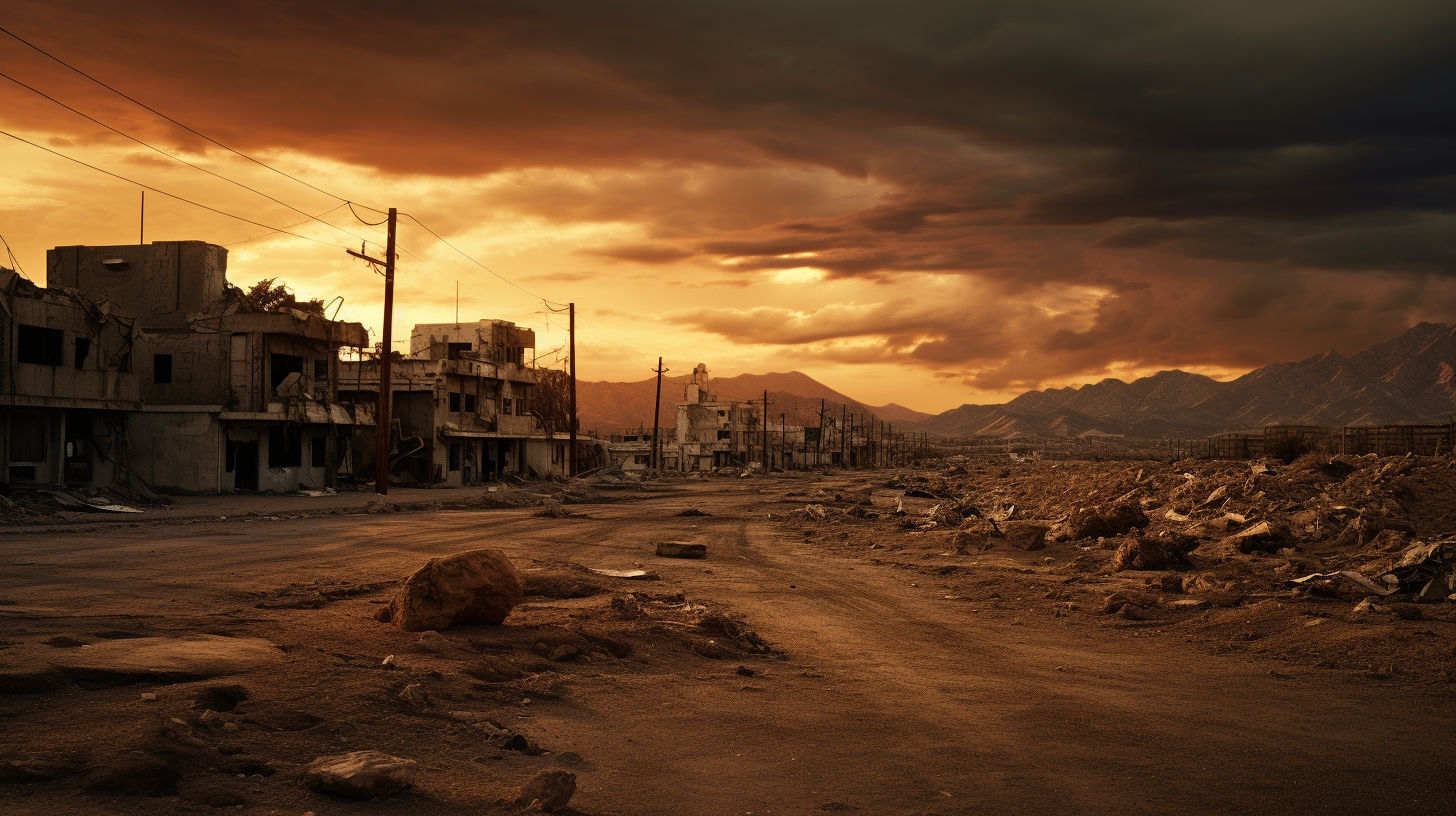In the heart of what was once a bustling civilization, a deafening quiet has now spread across the city’s expanse. Buildings that reached for the sky, now skeletons in the sand, stand as gaunt monuments to a memory of chaos long silent. Whispers of the Wasteland delves into the eerie silence that hangs like a shroud over the desert cities, a landscape scored by the sharp winds of neglect.
The winds here speak more than the humans do, their howling gales writing epic tales of desolation across the vast canvas of abandonment. Echoing through the empty streets, they carry with them stories of desiccation, once brimming watersheds now mercilessly parched.
‘It’s the quiet,’ one of the remaining sentinels of this desert refuge muses, ‘It gets to you. The world forgot its noise, its purpose. And now, we’re nothing but echoes.’ In a world where the cacophony of civilization has been muted, nature reclaims its throne with a silence as profound as the once-thriving life.
Where schools once echoed with the laughter and chatter of children, now, the same halls yawn with the stillness of the long-forgotten. Opulent malls, theaters, and arenas – the cathedrals of consumerism and celebration – stand as desolate courts for the scurrying creatures that have come to replace the crowds.
In this wasteland, the remnants of human habitation cling to survival in adaptive isolation. The article juxtaposes the eerily empty urban landscapes with the vibrant, if desolate, life that endures in the harsh climes.
The resilience of this life is encapsulated in stories of survival, wherein humanity’s remnants forge a new culture from the furnace of adversity. Solemn assemblies beneath star-laden skies replace the lit-up nightlife, with stories as currency in this economy of remembrance. Here, the consumption is of tales, not goods – a stark contrast to what once was.
Despite the setting sun on human civilization, nature flourishes unbounded, painting the city with its own palette. Sands shift endlessly, quietly erasing the last hints of structure and order. Cacti and stubborn shrubs burst from cracks in the asphalt, which nature’s relentless will punctuates.
Through the lens of an observer, these silent cities serve as a dire warning – an admonition of the future that awaits should humanity’s hubris continue unchecked. The silence of these ghost towns stands as a testament to the consequences of our past actions, where once the drumbeat of human achievement, now a forgotten symphony of whispered warnings.
And even with the desert tales spinning threads of somber survival, there’s a beauty in the desolation, an artistry to the peaceful takeover of natural forces.
It’s in the footprints that lead nowhere, in the haunting absence of children’s squeals, that the realization dawns upon the heart – the imminent totality of what has been lost, the encompassing nature of this calamitous quietude. The reader is left questioning, pondering the finality of this silence, as it swallows whole the remnants of civilization’s roar.
In the dying light of the desert’s sun, it seems that the end of humanity’s tale has been written by nature’s indifferent hand, its volume set in the dust of these desert cities, for whom the whisper is the only chapter left to talk of our once-great cacophony.
